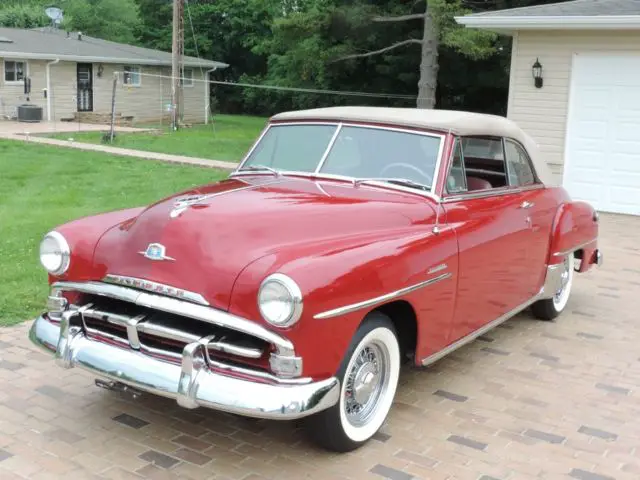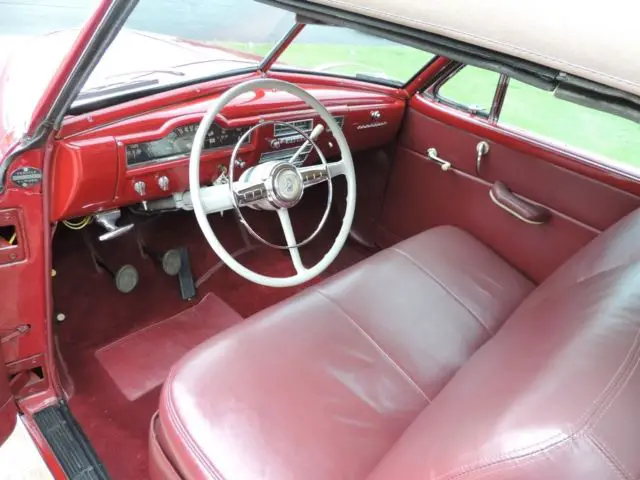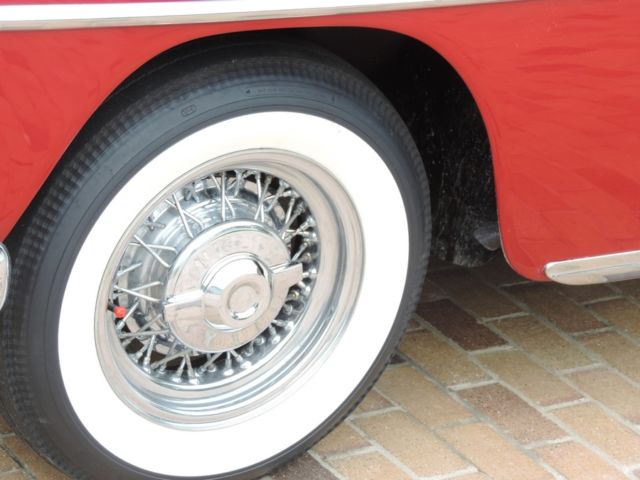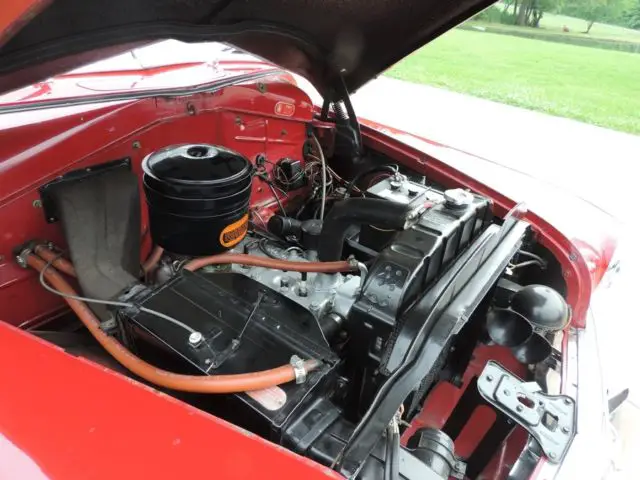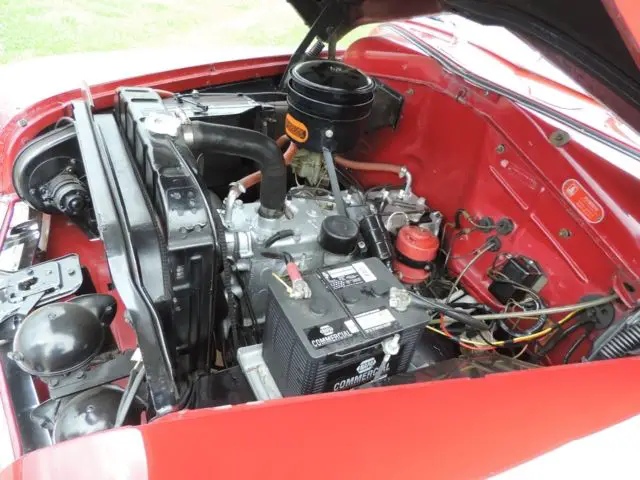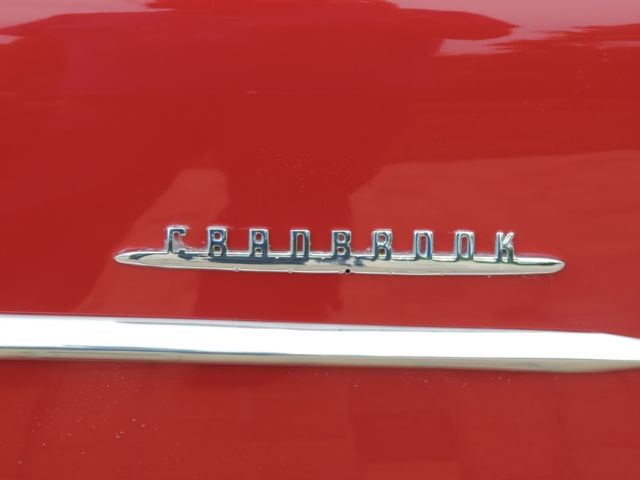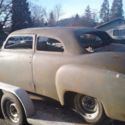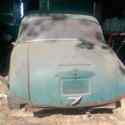1951 Plymouth Cranbrook Convertible
| Make: | Plymouth |
| Model: | Cranbrook |
| SubModel: | Cranbrook |
| Type: | Convertible |
| Year: | 1951 |
| Mileage: | 100 |
| VIN: | P23120915 |
| Color: | Holiday Red |
| Engine: | 217 cu in 6cyl |
| Cylinders: | 6 |
| Fuel: | Gasoline |
| Transmission: | Manual |
| Drive type: | RWD |
| Interior color: | Red |
| Vehicle Title: | Clear |
| Item location: | West Frankfort, Illinois, United States |
1951 Plymouth Cranbrook Cranbrook Additional Info:
1951 Plymouth Cranbrook ConvertibleExcellent Shape
Factory Wire Wheels
( Check The Trunk Photo it has 5 Wire Wheels)
The 1951 Plymouths had a new front clip, with a more modern, fast-looking sloping hood and grille. The hood sloped, and the sailing ship hood ornament was pushed back onto the top of the hood, with “speed waves” added. The Plymouth shield was restyled for the year, too.
Name badges were on the front fenders. Carried forward were two elements that competitors had dropped: windshields made of two flat panes of glass and bolt-on rear fenders.
A newly updated instrument panel put all the gauges into one group; a light, artificial finish replaced woodgrain.
A clock could replace the Plymouth medallion to the right of the radio.
Turn signals were moved onto the steering wheel hub, pushing the ignition to the right; the emergency brake became the familiar (until 1975) T-handle. Electric wipers were now standard on Plymouths. Cranbrook interior Broadcloth became standard on some models, with others coming in vinyl. A colors department worked on harmonizing interiors and exteriors. All of the 1951 Plymouths had the same engine, a 217 cid flathead six pushing power through a three-speed manual transmission to a Hotchkiss rear. Engines used Oilite fuel tank filters and had electric automatic chokes. While Ford and GM promoted their V8 engines, and even today enthusiasts stand by their love of those V8s, extra cylinders did not add much to the power; at 97 horsepower, the 217 cubic inch six was not as far as one would expect from the 110 hp Ford V8 engines. Indeed, Plymouth did well on NASCAR against the leading V8 Oldsmobiles and Hudson Hornets. Only Ford fielded more racing cars than the 52 Plymouths in NASCAR, and Plymouth ended up in second place behind Oldsmobile for the year. New for the 1951s were Oriflow shock absorbers, which provided variable resistance based on the severity of shocks, which confused some owners — they “failed” the then-standard test of pushing the bumper down. Concords rode on 6.40 by 15 inch Goodyear tires. The basic design of the car was conventional; the welded steel body sat on an arc-welded frame with double-channel box-section side rails and five crossmembers, with the convertible having an X-member design. The floor pan was channeled and ribbed, and box-section reinforcements were provided around window and door openings. A baked enamel finish completed the package, with the final car tipping the scales at around 3,200-3,400 pounds. The suspension used springs, similar to the Ford and General Motors vehicles of the time, while the rear sat on leaf-springs. Steering used a worm and ball bearing roller gear, with symmetric idler arm linkage and rubber-isolated pivots; ball-joint steering knuckles aided handling.
This car is easily between a #1 and a #2 Car Check the values
Hagerty Current Values Current Values
#1 Concours $48,500 Condition #1 vehicles are the best in the world. The visual image is of the best vehicle, in the right colors, driving onto the lawn at the finest concours. Perfectly clean, the vehicle has been groomed down to the tire treads. Painted and chromed surfaces are mirror-like. Dust and dirt are banned, and materials used are correct and superbly fitted. The one word description for #1 vehicles is "concours."
#2 Excellent $36,100 #3
Good $21,700 #4
Fair $15,400
This car is for sale locally and on the Internet. If you are Interested in buying, Call Bruce 618-923-3380 and lets make a deal!

